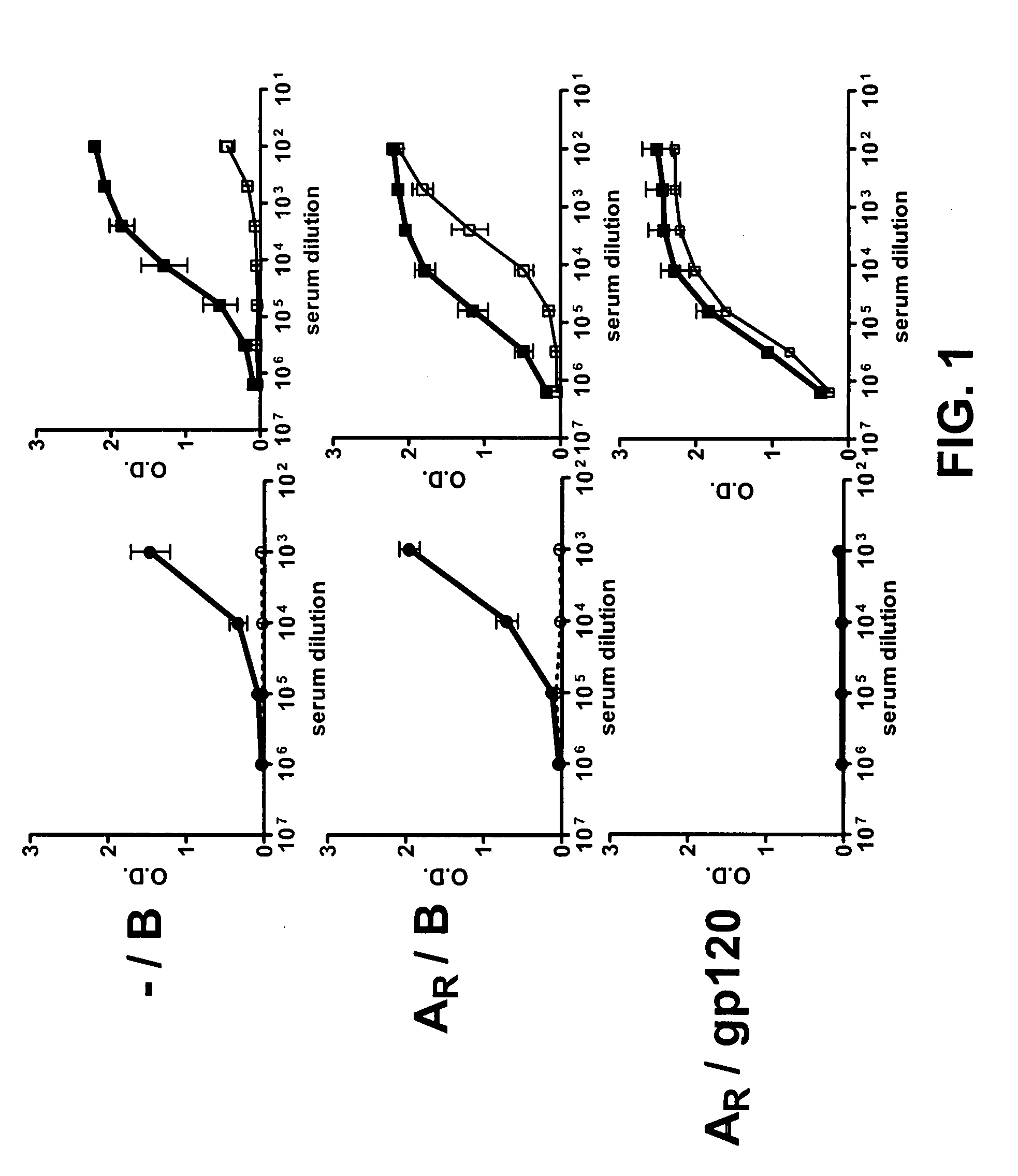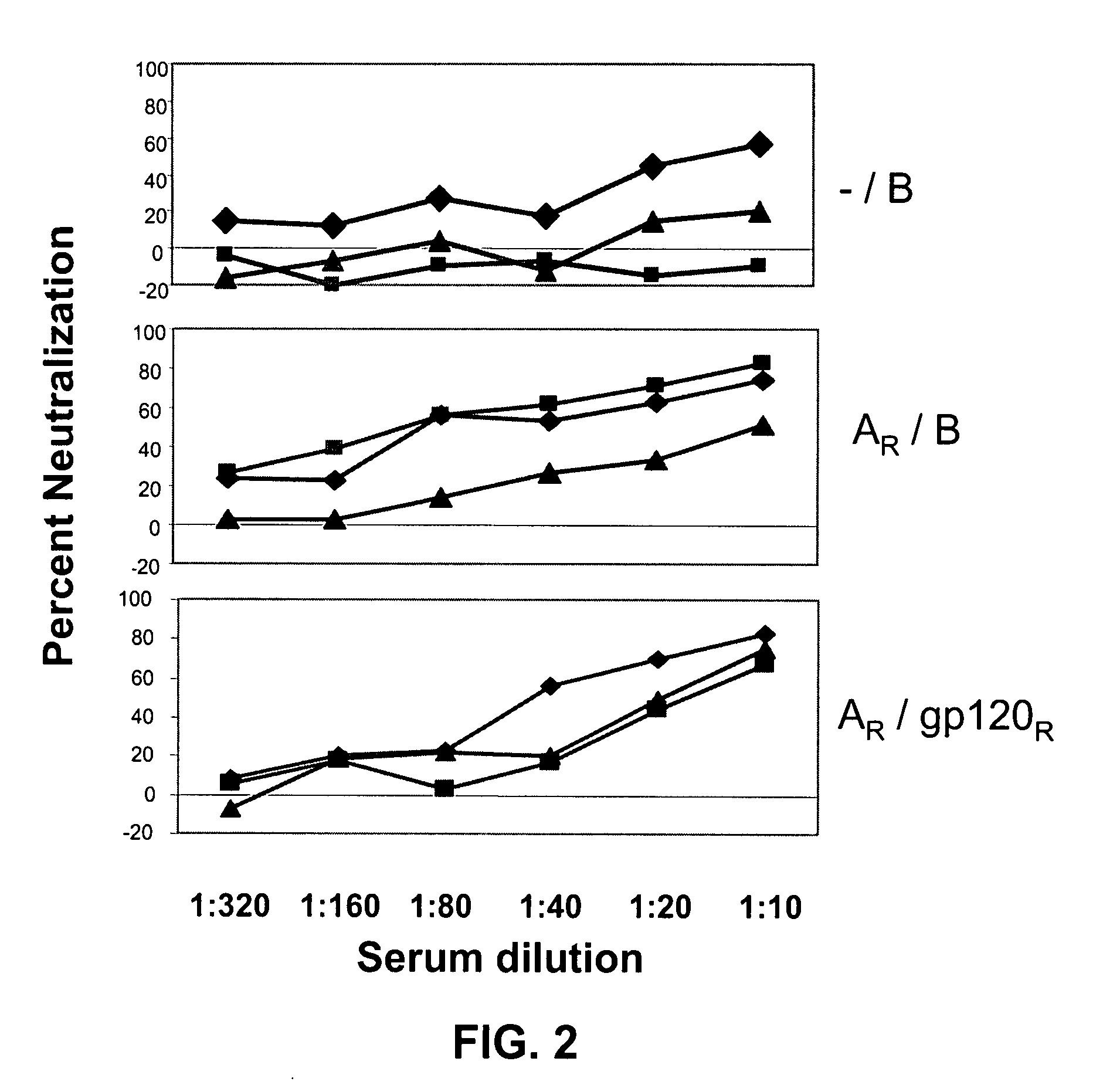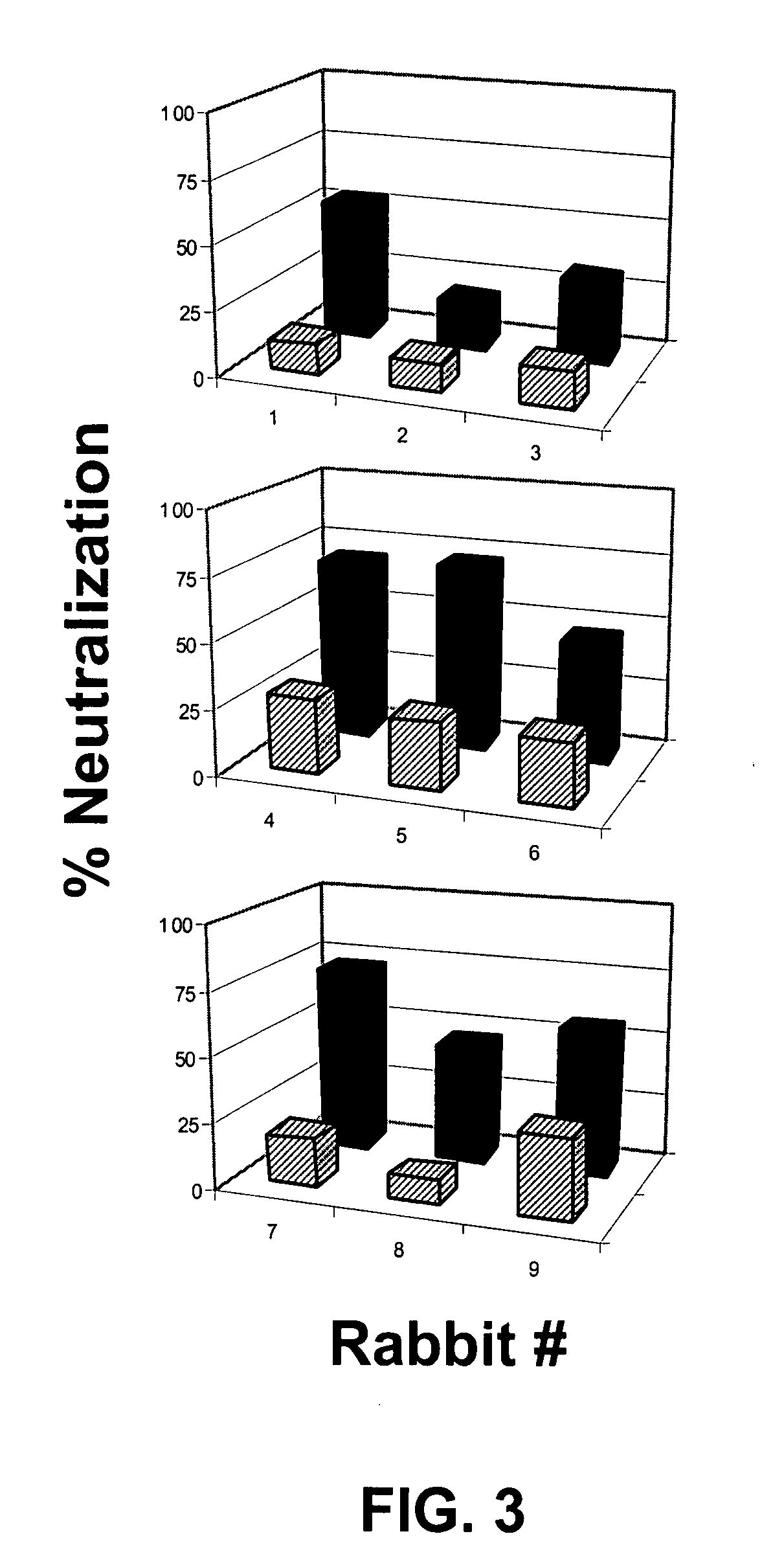INDUCTION OF BROADLY REACTIVE NEUTRALIZING ANTIBODIES BY FOCUSING THE IMMUNE RESPONSE ON V3 EPITOPES OF THE HIV-1 gp120 ENVELOPE
a broadly neutralizing antibody and immunogenic technology, applied in the field of biochemistry and medicine, can solve the problems of poor immunogenicity, constructs that fail to induce neutralizing abs, and it is difficult to induce broadly neutralizing abs by immunization, and achieve the effect of vigorous ab respons
- Summary
- Abstract
- Description
- Claims
- Application Information
AI Technical Summary
Benefits of technology
Problems solved by technology
Method used
Image
Examples
example i
Materials and Methods
Construction of Codon Optimized HIV Env DNA Vaccine Constructs
[0137]The codon usage of env genes from HIV clade A primary isolate CA1 and clade C 92BR025 (C1) were analyzed with the MacVector software 6.3 against codon preference of Homo sapiens. The codons in CA1 and C1 env genes that are less preferred in mammalian cells were changed to the preferred codons in mammalian systems to promote higher expression of the Env proteins. The codon optimization strategy was not limited to changes of codons for mammalian usage. Sequence optimization was also performed to make the mRNA more stable and the gene more favorable for transcriptional and translational process. During the sequence optimization, the following cis-acting sequence motifs were avoided: internal TATA-boxes, chi-sites and ribosomal entry sites; AT-rich or GC-rich sequence stretches; ARE, INS, CRS sequence elements; cryptic splice donor and acceptor sites; and branch points. Despite such DNA level sequen...
example ii
Design of Immunogens and Immunization Protocols
[0151]Two sets of rabbits were immunized. The protocol is summarized in Tables 2 and 3 (and described in more detail in Example I).
TABLE 2Immunization groups for rabbit studyImmunizingRegimenGroupDNA prime at wks 0, 2, 4Protein boost at wks10 & 14— / BI-1—V3B-FPAR / BI-2gp120 / Clade A (GPGR)V3B-FPAR / 120RI-3gp120 / Clade A (GPGR)gp120JR-FL— / ABCII-1—V3A-FP, V3B-FP, V3C-FPAR / ABCII-2gp120 / Clade A (GPGR)V3A-FP, V3B-FP, V3C-FPCQ / ABCII-3gp120 / Clade C (GPGQ)V3A-FP, V3B-FP, V3C-FPAR + CQ / II-4gp120 / Clade A (GPGR) andV3A-FP, V3B-FP, V3C-FPABCgp120 / Clade C (GPGQ)AR / BII-5gp120 / Clade A (GPGR)V3B-FPNote:GPGR above is SEQ ID NO: 17;GPGQ is SEQ ID NO: 17*V3 sequences in priming and boosting constructs above are shown in Table 3, below. Variations in sequence from relevant consensus sequences are underlined and the variation at the tip of the loop, position 18 (R / Q), is bolded below (and bolded and underscored in Table 2)
TABLE 3SEQIDV3 SourceSequenceNO:CA1 clad...
example iii
Immunization with Monovalent Immunogens: Antibody Levels Measured by ELISA
[0154]In the first experiment, both the prime and boost constructs carried the GPGR V3 motif (SEQ ID NO:17). To compare the effect of priming and the boosting efficiency of gp120 vs. V3B-FP, three groups of rabbits were used(see also Tables 2 & 3).
Group I-1 (— / B):no prime; immunized with V3B-FP,Group I-2 (AR / B)clade A DNA gp120 prime (carries GPGR V3motif (AR); boosted with V3B-FP, andGroup I-3: (AR / gp120R)clade A DNA gp120 prime followed byboosting with gp120 from the JR-FL clade Bstrain
[0155]To determine the specificity of Abs induced by the various immunization regimens, the reactivities of the sera from immunized animals were measured against control MuLV gp70 (the protein into which the V3 sequences had been spliced to form the V3-FPs), against the YU-2 gp120 core, and against the YU-2 gp120 core carrying the V3 sequence (gp120+V3) (Wu, L et al. (1996) Nature 384: 179-83). The sera were derived from blood...
PUM
| Property | Measurement | Unit |
|---|---|---|
| Time | aaaaa | aaaaa |
| Mass | aaaaa | aaaaa |
| Mass | aaaaa | aaaaa |
Abstract
Description
Claims
Application Information
 Login to View More
Login to View More - R&D
- Intellectual Property
- Life Sciences
- Materials
- Tech Scout
- Unparalleled Data Quality
- Higher Quality Content
- 60% Fewer Hallucinations
Browse by: Latest US Patents, China's latest patents, Technical Efficacy Thesaurus, Application Domain, Technology Topic, Popular Technical Reports.
© 2025 PatSnap. All rights reserved.Legal|Privacy policy|Modern Slavery Act Transparency Statement|Sitemap|About US| Contact US: help@patsnap.com



